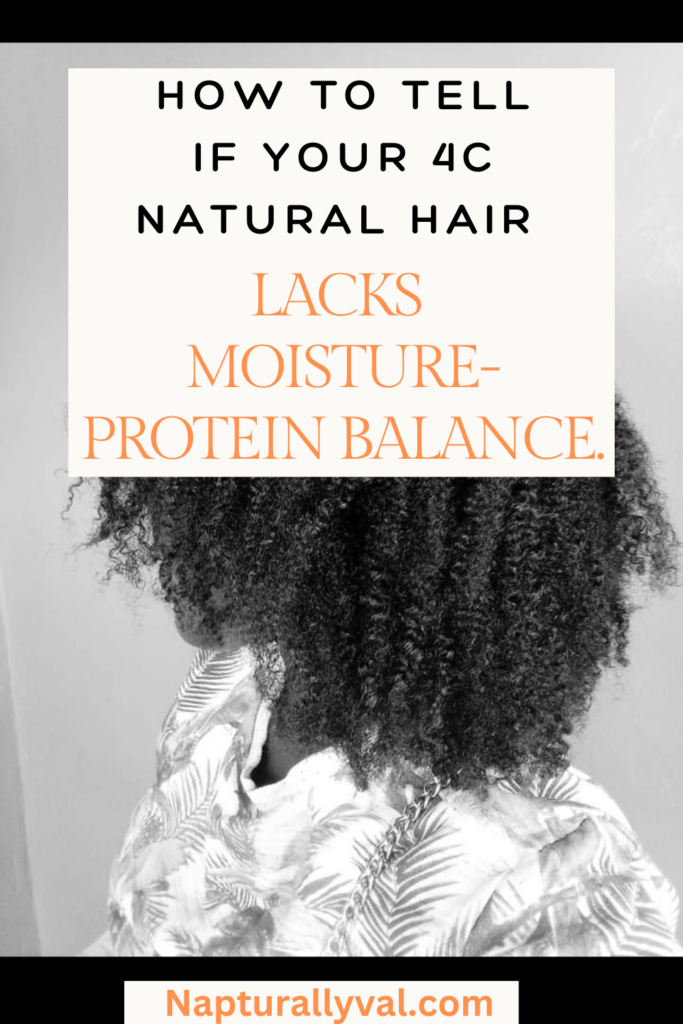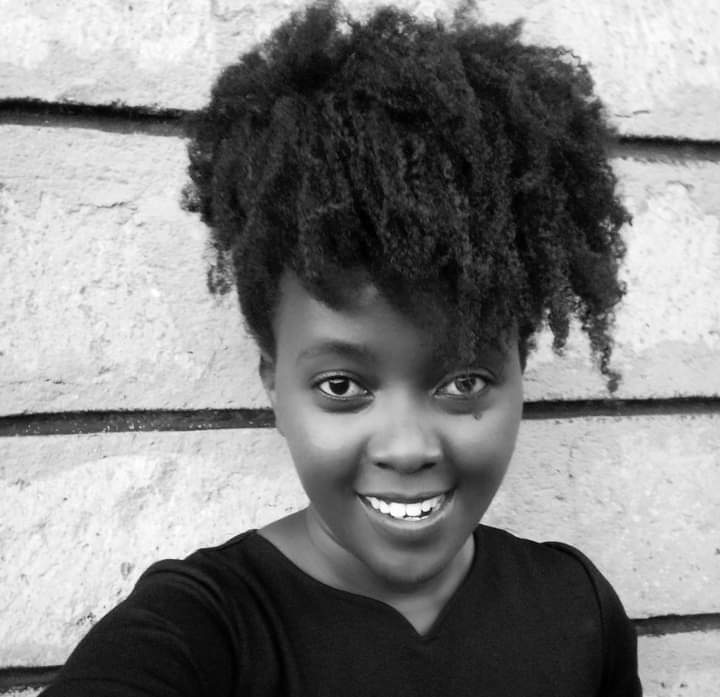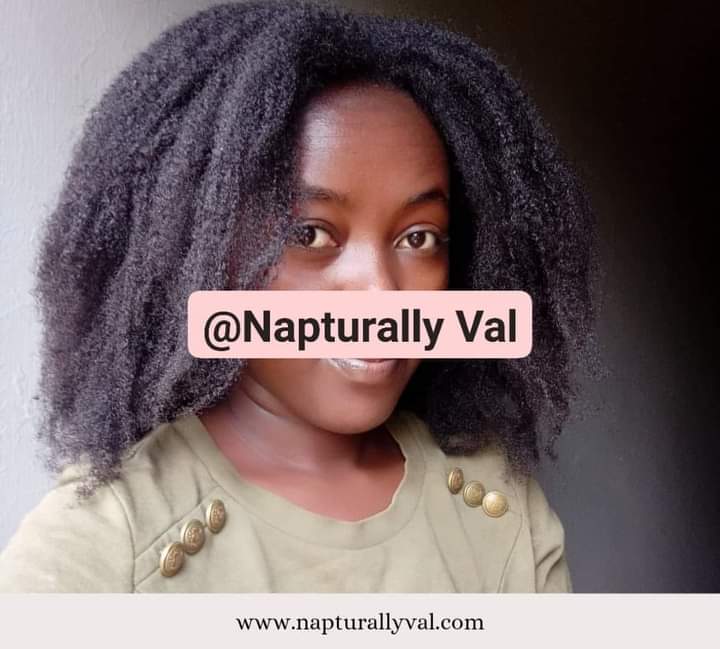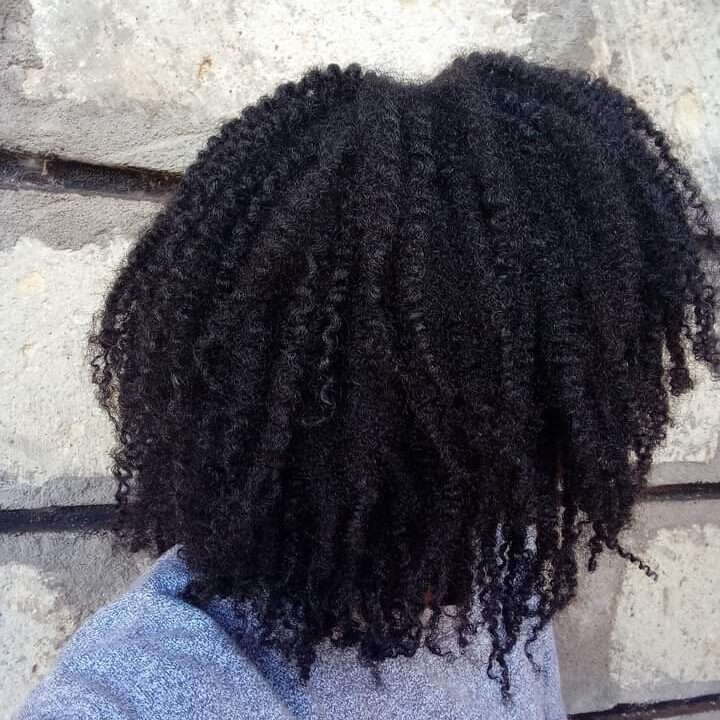If you’ve been on your natural hair journey for a while, you’ve probably heard the term moisture-protein balance thrown around. But what does it really mean? And how do you know if your 4C natural hair has a moisture-protein imbalance? I’m here to break it all down in this detailed post. We’re going to explore how to identify whether your hair is lacking moisture, overloaded with protein, or just right.
Maintaining a healthy moisture-protein balance is crucial for growing strong, healthy 4C hair. Too much of either can lead to dryness, breakage, or limp hair that’s difficult to manage. Let’s dive into how you can assess where your hair stands and restore balance if things are off.
Feel like your hair has been the same length forever, I’ve an Ebook that will help you grow your hair healthier, longer and thicker. Grab your copy here… Also, check out all the Ebooks,guides and journals that will go a long way in your hair care journey here.

Table of Contents
Moisture vs Protein: How to Balance 4C Hair for Healthy Growth.
Understanding Moisture-Protein Balance
To understand moisture-protein imbalance, let’s start with the basics.
- Moisture refers to the hydration level in your hair. Moisturized hair is soft, elastic, and pliable. It’s able to stretch and bend without breaking.
- Protein is what gives your hair structure and strength. Our hair is made primarily of a protein called keratin, and it’s what holds your strands together, preventing them from becoming weak or too stretchy.
Your 4C hair needs both moisture and protein to thrive. Moisture keeps your curls bouncy and soft, while protein strengthens the hair, preventing breakage. When one outweighs the other, things go haywire. The key is finding the right balance.
Signs of a Moisture Imbalance in 4C Hair
4C hair, with its tightly coiled curl pattern, naturally tends to be drier than other hair types. That’s because the natural oils from your scalp struggle to travel down the length of your strands. So, moisture imbalance is a common issue for 4C naturals. Here are some signs your hair may be moisture deficient:
1. Brittle, Stiff Hair
If your hair feels dry, hard, or brittle to the touch, it likely has a moisture deficiency. Brittle hair doesn’t have enough elasticity, so it snaps easily when manipulated or styled.
What it feels like: Think of it as feeling straw-like. It’s rough to the touch and lacks that soft, supple feeling you’d expect when your hair is properly moisturized.
2. Breakage and Split Ends
Dry hair is prone to breakage. If you’re noticing excessive breakage during detangling or styling, especially at the ends, your hair may be crying out for moisture.
What to look for: You might see tiny broken pieces of hair on your shoulders or in your comb. Split ends are also a sign that your strands are starving for hydration.
3. Dull, Lackluster Hair
Moisturized hair naturally has a sheen or glow to it, even if you’re not using a bunch of styling products. If your hair looks dull and lacks its usual vibrancy, it could mean that it’s dried out and lacking moisture.
What to look for: Does your hair lack that natural shine even after washing and conditioning? If it looks dry and lifeless, it may need more hydration.

Signs of Protein Imbalance in 4C Hair
On the flip side, too much protein in your hair can also cause problems. Protein overload happens when your hair receives too many protein treatments or when you use products that are too rich in protein ingredients. Here’s how to tell if your 4C hair has a protein imbalance:
1. Hair Feels Stiff or Straw-like
One of the biggest indicators of protein overload is when your hair feels stiff and crunchy. Protein strengthens hair, but too much can make it hard and inflexible.
What it feels like: Instead of soft, your hair feels rigid or straw-like. It may seem like it’s “frozen” in place and lacks flexibility.
2. Increased Breakage
While protein is meant to strengthen hair, an overload can have the opposite effect. Too much protein makes hair stiff and fragile, which can lead to breakage, especially during styling or manipulation.
What to look for: If you’re seeing lots of broken hair strands and you’ve been using protein treatments or protein-rich products, this could be a sign that your hair has too much protein.
3. Hair Feels Rough
Hair that’s overloaded with protein tends to feel rough, almost like it has a coating on it. You may notice that even after washing and conditioning, your hair doesn’t feel as soft or smooth as it should.
What to look for: If your hair doesn’t feel smooth even after applying your favorite leave-in or moisturizing products, there may be too much protein present.

The Wet Hair Test: Is Your Hair Balanced?
One easy way to check if your hair has a moisture-protein imbalance is to do the wet hair test. Here’s how you can perform this simple test at home:
1. Grab a Wet Strand of Hair
After washing your hair, take a single strand while it’s still wet. You’ll want to gently pull on the strand to stretch it.
2. Observe What Happens
- If the strand stretches and returns to its original shape, your moisture-protein balance is in good condition.
- If the strand stretches a lot but doesn’t return to its original shape or feels limp, it’s likely moisture-deficient and needs more hydration.
- If the strand snaps quickly without stretching much, this is a sign of protein overload. Your hair may need more moisture to balance things out.
How to Restore Moisture-Protein Balance in 4C Hair
If you’ve determined that your hair has a moisture-protein imbalance, don’t worry – it’s fixable! Here’s how to bring your hair back to a healthy balance, whether you’re dealing with moisture deficiency or protein overload.
1. For Moisture Deficiency
If your hair is lacking moisture, here’s what you can do to restore balance:
- Deep condition regularly: Start deep conditioning weekly with a hydrating, moisture-rich deep conditioner. Look for ingredients like aloe vera, honey, shea butter, and glycerin, which provide intense hydration.
- The LOC or LCO method: Use the LOC (Liquid, Oil, Cream) or LCO (Liquid, Cream, Oil) method to lock in moisture. Start with water, follow with a leave-in conditioner, and seal it with oil or cream.
- Hydrate daily: Spritz your hair with water or a water-based leave-in conditioner daily to keep it moisturized.
2. For Protein Overload
If you’re dealing with protein overload, here’s how to reverse it:
- Moisture overload: Lay off protein-rich products and treatments for a while. Switch to moisturizing shampoos, conditioners, and leave-ins that focus on hydration.
- Clarifying treatment: Use a gentle clarifying shampoo to remove any product buildup from protein treatments.
- Moisturizing deep conditioner: Apply a moisture-based deep conditioner without protein to replenish hydration in your strands.

How to Maintain the Right Moisture-Protein Balance
Maintaining the right balance of moisture and protein is essential for healthy, thriving 4C hair. Here’s how you can stay on top of it:
- Alternate treatments: Incorporate both moisture and protein treatments into your routine. Use protein treatments about once a month, and focus on moisturizing treatments weekly or use deep conditioners with moisture protein balance.
- Listen to your hair: Always pay attention to how your hair feels. If it’s feeling too dry, add more moisture. If it’s feeling too soft and weak, a protein treatment might be in order.
- Read product labels: Be mindful of the ingredients in your products. Look out for key protein ingredients like hydrolyzed keratin, silk, or collagen. For moisture, look for humectants like glycerin or moisturizing oils like coconut and avocado oil.
Your 4C natural hair thrives on a delicate balance of moisture and protein. Too much of either can leave your strands feeling weak, brittle, or dry. By paying attention to the signs and adjusting your routine, you can restore balance and keep your hair healthy and beautiful.
Don’t forget, hair care is all about trial and error. What works for one person might not work for another, so listen to your hair and find the balance that suits its unique needs. Here’s to happy, healthy 4C curls!



